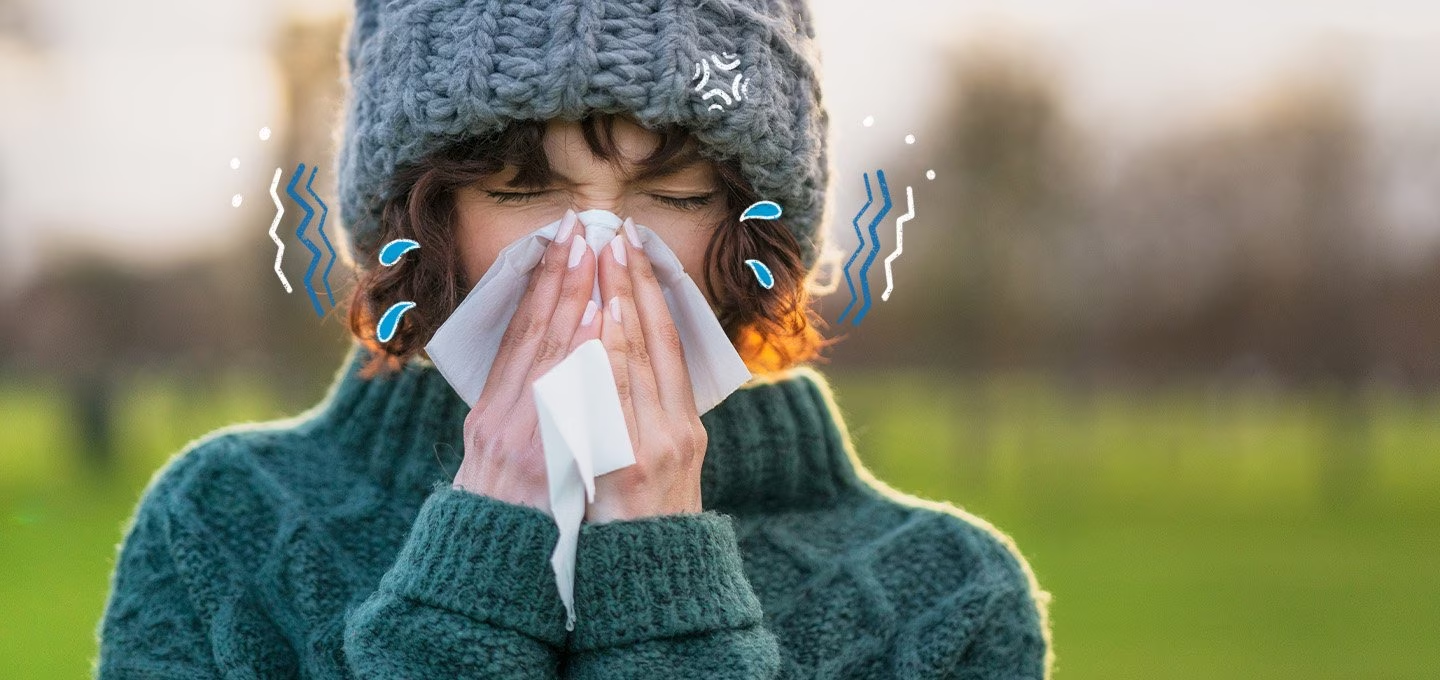
The conversation surrounding allergy shots, formally known as Subcutaneous Immunotherapy (SCIT), is often clouded by various circulating falsehoods and oversimplifications. For those struggling with persistent allergic rhinitis, asthma, or severe reactions to insect stings, SCIT represents a fundamental shift from merely managing symptoms to fundamentally altering the body’s immune response. Yet, the procedure’s unique demands—a prolonged schedule, the necessity of injections, and the slow pace of results—have fostered a landscape ripe for conjecture. Moving beyond common, often anxiety-inducing rumors is essential for a patient to make an informed decision about this distinct, disease-modifying therapy. The key to understanding allergy shots lies in appreciating the immunological shift they prompt, a process which is frequently misunderstood in the public discourse. This examination intends to address the most persistent misunderstandings by focusing on the underlying biological mechanisms and clinical realities, rather than relying on generalized therapeutic pronouncements.
…fundamentally altering the body’s immune response.
Myth 1: Allergy Shots Only Treat Symptoms, Just Like Pills.
The misconception that immunotherapy is merely another form of symptomatic relief, akin to a daily antihistamine or nasal spray, overlooks the entire scientific basis of the treatment. Antihistamines and corticosteroids function as short-term modulators, either blocking the effects of histamine or reducing localized inflammation after the immune cascade has already been initiated. They are reactive, not proactive. In stark contrast, allergy shots are truly disease-modifying. The goal of SCIT is to fundamentally reprogram the immune system’s handling of specific allergens. By introducing gradually increasing doses of the problematic substance, the therapy encourages the immune system to shift its response away from an allergic, or Th2, reaction, which involves the production of IgE antibodies, towards a non-allergic, or Th1, response. This shift is mediated by the production of “blocking” antibodies, specifically IgG, which intercept the allergen before it can trigger the IgE-mediated cascade. This immunological re-education is the key differentiator, providing long-term relief that persists even after the treatment is concluded, a feat impossible for typical symptomatic medications.
…The goal of SCIT is to fundamentally reprogram the immune system’s handling of specific allergens.
Myth 2: You Have to Continue Allergy Shots for the Rest of Your Life.
The perceived life-long commitment to weekly or monthly injections is a significant barrier for many potential candidates. While the treatment protocol is certainly lengthy, spanning a period of several years, the idea of an indefinite commitment is a fallacy. The standard treatment course is divided into two distinct phases: the build-up phase, where the dose is gradually increased, and the maintenance phase, which is generally continued for three to five years. The immunological tolerance that develops during this time is often robust and durable. Numerous clinical studies have demonstrated that a majority of patients who complete the full three-to-five-year course of maintenance therapy experience sustained relief from their allergy symptoms for many years, even after the shots are completely discontinued. The immune system has essentially learned to ignore the allergen, and for most, this ‘learning’ is not forgotten, though a small percentage may require a shorter booster course much later in life.
…The immunological tolerance that develops during this time is often robust and durable.
Myth 3: Allergy Shots Are Too Painful and Have Debilitating Side Effects.
The mental image of needles and the association with pain frequently deter individuals, fueling a myth of an arduous, discomforting process. While the procedure does involve a subcutaneous injection, which can certainly cause a momentary sting, the discomfort level is typically minimal and comparable to a standard vaccination. The most common side effects are localized: temporary redness, swelling, or itching at the injection site, which often subsides within a few hours. Systemic reactions, those affecting the entire body such as hives, wheezing, or anaphylaxis, are rare. It is the possibility of these rare, severe reactions that mandates the required 30-minute post-injection observation period in a clinical setting, a necessary safety precaution, not an indication of routine danger. The treatment’s overall safety profile, when administered under the supervision of a trained allergist, is excellent, making the perceived severity of pain and side effects a gross exaggeration of the clinical reality.
…The most common side effects are localized: temporary redness, swelling, or itching at the injection site…
Myth 4: If Allergy Shots Don’t Work Quickly, They Are Ineffective.
Patience is not just a virtue in immunotherapy; it is a clinical requirement. Many people, accustomed to the immediate relief offered by conventional medications, expect a rapid improvement and become discouraged when their symptoms do not vanish within the first few months of the build-up phase. This misconception fails to account for the gradual nature of the underlying immunological change. The process of shifting the Th2/IgE response to a Th1/IgG response is slow and incremental. It is not uncommon for patients to experience only marginal improvement during the first six to twelve months of the build-up phase. The most substantial and noticeable relief often correlates with reaching and spending time at the effective maintenance dose. Clinical guidance suggests that patients should continue the maintenance phase for at least a year before judging the treatment’s long-term efficacy, as the full benefits of desensitization are realized over time, not overnight.
…This misconception fails to account for the gradual nature of the underlying immunological change.
Myth 5: It’s Too Late to Start Allergy Shots as an Adult.
A common belief suggests that the immune system loses its capacity for immunological re-education as a person ages, leading to the false conclusion that allergy shots are ineffective for adults. While many children benefit from SCIT, as it can potentially prevent the progression of allergic rhinitis to asthma, the therapy is demonstrably effective across all adult age groups. There is no definitive age cap beyond which the body cannot develop tolerance. For an adult who has spent decades struggling with environmental allergies, SCIT offers the same opportunity for long-term symptom reduction and a decreased reliance on daily medication. The primary considerations for older adults are not about the immune system’s capacity, but about co-existing health conditions, particularly cardiovascular issues, which require careful management during the initial phases. Therefore, age should not be a deterrent for pursuing this disease-modifying treatment.
…the therapy is demonstrably effective across all adult age groups.
Myth 6: Allergy Shots Work for Every Type of Allergy.
The expansive term “allergy shots” can lead to the overgeneralization of their clinical utility. While SCIT is highly effective for inhaled allergens—such as pollen from trees, grasses, and weeds, as well as indoor culprits like dust mites, mold, and pet dander—and for venoms from stinging insects, it is not a universal panacea. Specifically, allergen immunotherapy is not currently an approved or standard treatment for food allergies or medication allergies, where the primary and most critical management strategy remains strict avoidance. The biological mechanisms that govern the reactions to environmental allergens and venoms differ fundamentally from those involved in food allergies, dictating different treatment approaches. Understanding the precise scope of SCIT is crucial to setting realistic expectations and ensuring proper allergic disease management.
…allergen immunotherapy is not currently an approved or standard treatment for food allergies or medication allergies…
Myth 7: All Allergy Shot Formulations Are Identical.
Patients may incorrectly assume that all allergen extracts are manufactured and dosed uniformly. This is a profound misunderstanding of the personalized nature of immunotherapy. Allergy shots are not a pre-mixed, one-size-fits-all solution. They are highly individualized, custom-formulated treatments based exclusively on a patient’s unique allergy profile, as determined by skin or blood testing. The specific mix of allergens, the concentration of each component, and the schedule for dose escalation are meticulously tailored by an allergist to match the patient’s sensitivities, environmental exposures, and immunological tolerance. Administering an ineffective, overly dilute dose or an excessively strong dose can compromise both the efficacy and the safety of the entire treatment course, highlighting the necessity of professional, personalized formulation.
…They are highly individualized, custom-formulated treatments based exclusively on a patient’s unique allergy profile…
Myth 8: You Can Get Your Allergy Shots Anywhere, Like a Flu Vaccine.
The convenience factor of mass-administered public health injections, such as flu shots, incorrectly influences expectations for immunotherapy. Due to the small, albeit real, risk of a severe systemic reaction—specifically anaphylaxis—allergy shots must be administered in a medical facility that is fully equipped with the personnel and emergency medications (including epinephrine) to treat such a reaction immediately. This clinical requirement is not about procedure complexity but about patient safety. The required 30-minute observation period, which may seem inconvenient, is non-negotiable and is a direct result of the nature of the treatment. Any deviation from this clinical setting, such as self-administering shots at home (excluding approved sublingual therapies), poses an unacceptable safety risk.
…Allergy shots must be administered in a medical facility that is fully equipped with the personnel and emergency medications…
Myth 9: Allergy Shots are Always a Final and Permanent Cure.
The term “cure” carries a weight that often misrepresents the long-term outcome of SCIT. While the therapy is disease-modifying, leading to a state of profound and long-lasting tolerance, using the word “cure” can create unrealistic expectations. A successful course of treatment often results in the elimination or significant reduction of symptoms, allowing the patient to function without daily medication, but it is better described as inducing a sustained remission or a state of clinical non-responsiveness. The underlying allergic tendency, the genetic predisposition to the condition, is not entirely erased. While the effects are durable for the majority, a small subset of individuals may experience a gradual relapse of symptoms years after stopping the shots, which may necessitate a brief retreatment.
…it is better described as inducing a sustained remission or a state of clinical non-responsiveness.
Myth 10: Missing a Few Shots Doesn’t Really Matter in the Long Term.
Adherence to the SCIT schedule is critically important, and the perception that occasional missed appointments are inconsequential is dangerous. The effectiveness of immunotherapy is directly dependent on the cumulative dose of the allergen received over time. In the build-up phase, a missed injection requires a significant dose reduction upon the patient’s return to mitigate the risk of a reaction, effectively slowing down the entire desensitization process. Sporadic or inconsistent participation can prevent the patient from ever reaching the therapeutic maintenance dose required to induce the necessary immune shift, rendering the entire endeavor ineffective. Consistency is the foundation upon which long-term immunological tolerance is built.
Immunotherapy is the only treatment that re-educates the immune system for lasting relief, effectively dispelling myths of lifelong commitment and symptomatic-only benefits.
